REFRACTIVE ERRORS
MYOPIA / Nearsightedness / Shortsightedness
Myopia is a widespread defect characterized by having difficulties seeing faraway subjects, resulting in them appearing blurry. Today, myopia affects many people worldwide, particularly younger people. But why does this happen? Studies have shown that the lack of outdoor activities and intensive screen use may have accentuated it.
Read More
Myopia is often caused by the eye length being too long. This results in the distance between the cornea and retina being too great. Myopia can also be caused by the cornea and/or lens being too curved for the length of the eyeball. In some cases, myopia is due to a combination of these factors.
A myopic person has difficulty seeing things far away because the image is formed in front of the retina. However, they see well up close. The more a person is myopic, the closer they’ll need to be to the object to see clearly.
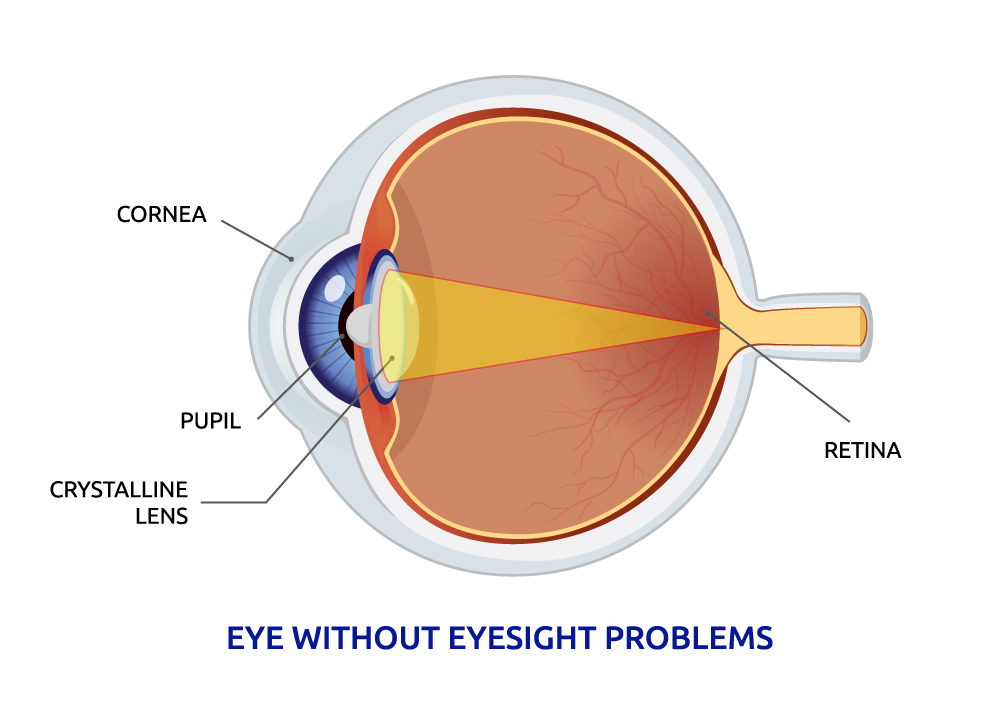
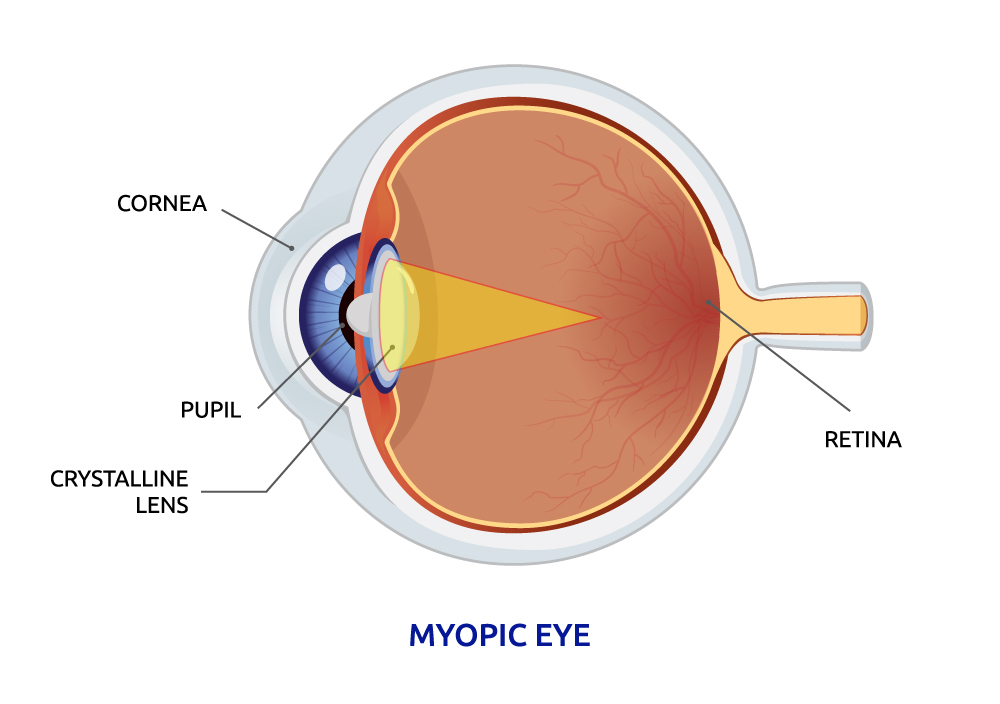

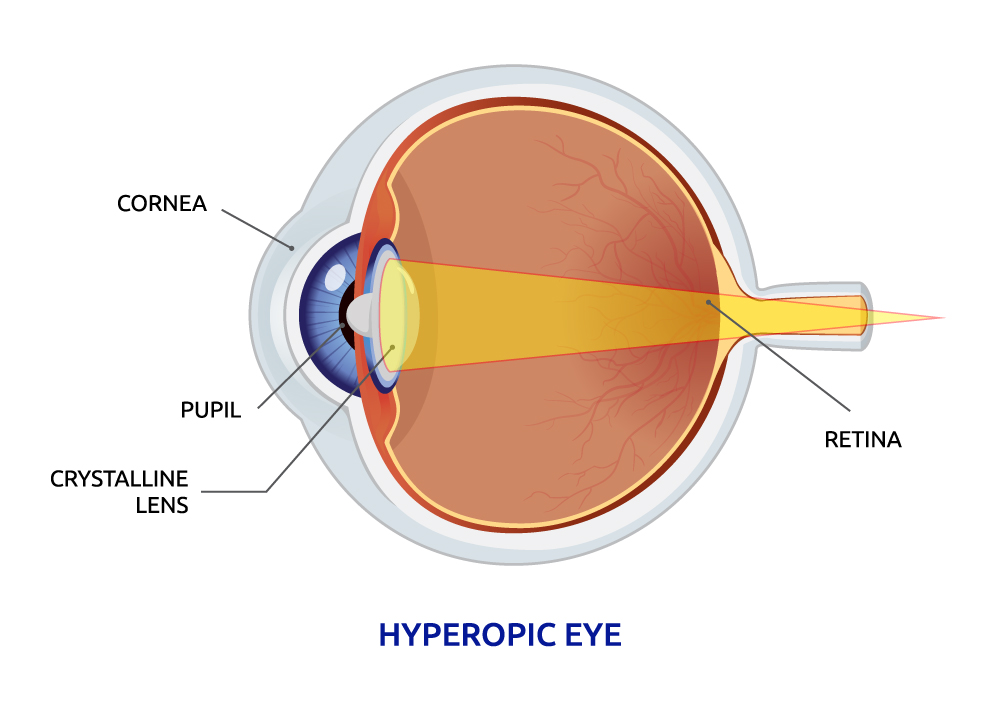
Hyperopia is a common vision condition in which an individual sees faraway objects clearly but struggles to see things nearby, with objects often appearing blurry.
Read More
In the case of hyperopia, the eyeball is too short, resulting in insufficient distance between the cornea and the retina. Consequently, the image of an object forms behind the retina. Hyperopia may also be caused by an abnormal shape of the cornea or lens.
Therefore, a person with low hyperopia can only see clearly by constantly adjusting and accommodating their view.
Someone who is astigmatic has both imprecise near and far vision. Peripheral vision images, in particular, can sometimes appear deformed. Astigmatism can also be combined with other eyesight problems, such as hyperopia and myopia.
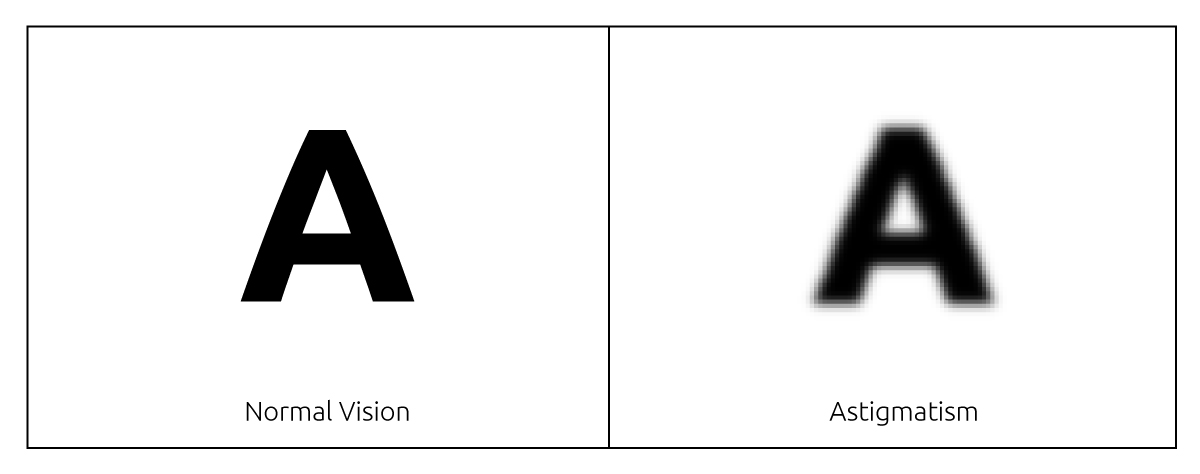
COMMON SYMPTOMS OF ASTIGMATISM
- Headaches
- Eyestrain
- Distortion and blurred vision at all distances
- Has difficulty in driving at night
- Squinting
Irregular curvature of the cornea mainly causes astigmatism. As a result, the image is not formed correctly on the retina but distorted according to the cornea’s curvature.

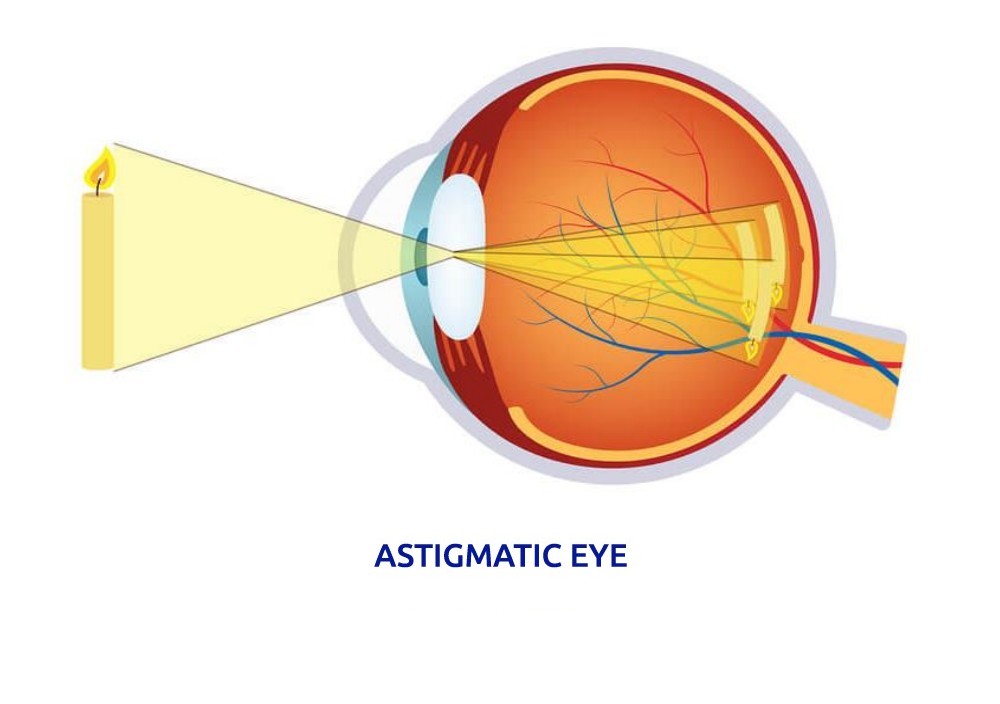

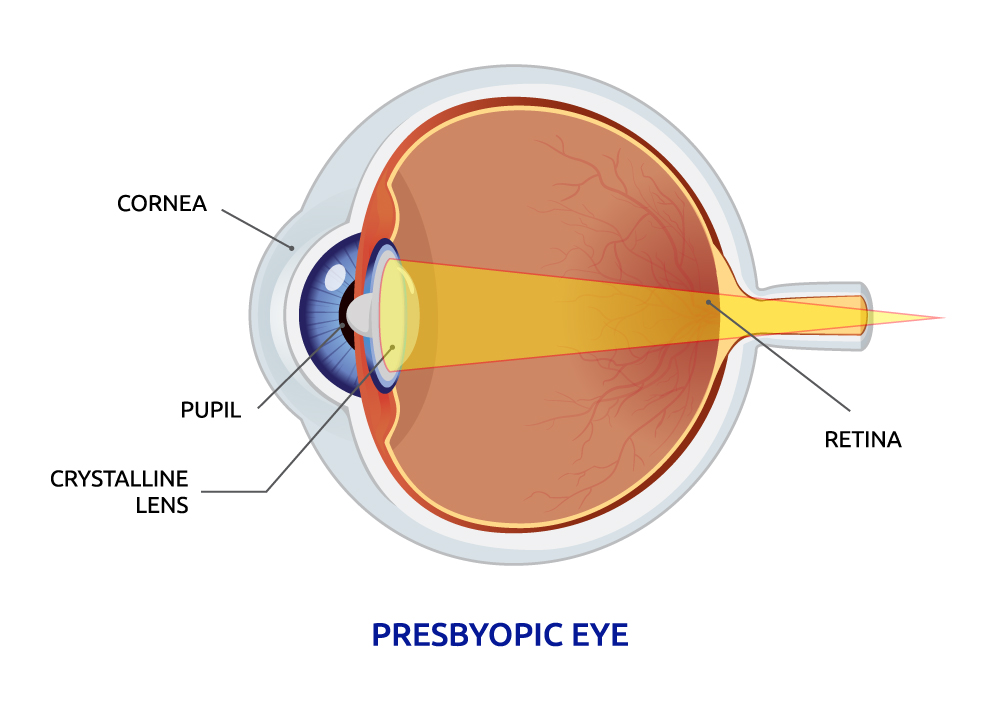
Presbyopia is not a visual defect but a natural evolution of our vision. No one is born with presbyopia, but we all develop it. It affects both women and men in their early 40s onwards and occurs when the eye cannot focus clearly on nearby objects.
Read More
From the age of 40 onwards, the lens loses some of its elasticity and ability to accommodate and can no longer adjust its focus to see things up close. Symptoms include having difficulty reading small print, holding material farther away, headaches, and eyestrain.
VISION PROBLEM
-
Blurred Vision
-
Eye strain
-
Poor Night Vision and Driving
-
Headache
-
OVEREXPOSURE TO UV (ULTRAVIOLET) LIGHT
-
OVEREXPOSURE TO BLUE – VIOLET RAYS

It may be time to see an eye specialist if you’re experiencing blurriness when looking at faraway objects such as signboards or struggling to read things up close. Common causes of blurriness include refractive errors such as myopia, hyperopia and presbyopia. However, it may also indicate other impairments.
There are many causes of eye strain. But the most common reasons are working on digital screens for long hours without eye protection and struggling to drive under heavy lights for long distances. Symptoms may even be worse for those with pre-existing vision conditions such as astigmatism, myopia or hyperopia.


Do you have trouble seeing well at night? Most people encounter this issue, especially when driving in low light conditions. If this sounds familiar, visit your eye doctor to have your vision tested.
While poor night vision usually affects older people (usually after they turn 40), anyone of any age may also develop poor night vision. As we grow older, we require more light to see. Compared to an average 30-year-old, older individuals may need twice as much light to see. Children may also experience this, which may be a symptom of other medical issues.
Vision problems can lead to neck and shoulder pain. Prolonged tension on your eyes’ muscles to accommodate different vision needs may also cause eye strain and headaches.
To alleviate these issues, adjust the distance of your computer screen so that it is at least 50cm away. The monitor should also be at eye level or just slightly below. Consult your eye doctor if you continue to experience vision issues.


Studies show that overexposure to UV light can result in irreversible eyesight problems.
UV rays can penetrate your eyes, causing damage to your retina and leading to blurred or distorted central vision. Absorption of UV rays can also impair your cornea and lens, resulting in eye sunburn, dry eye syndrome, or cataract development.
UV rays can still reach our eyes even under the shade or when we’re not looking directly at the sun. Children, in particular, have larger pupils and more transparent ocular media than adults, which means that they are more sensitive to bright light and UV rays.
UV radiation is especially harmful to the eye’s anterior, which comprises the cornea and crystalline lens. Prolonged and cumulative exposure to UV rays from the sun accelerates the aging process of these eye parts and increases the risk of macular degeneration and cataracts.
Overexposure to harmful blue light emitted from digital devices can impair the retina and cause eye strain.
Other effects include eye fatigue, poor visual contrast, dry eyes, and headaches. The risk of macular degeneration and retinal diseases also increases. Too much blue light may also decrease melatonin and disrupt sleep cycles.
Children face higher risks as their eye lens is more transparent, enabling more blue light to enter.

